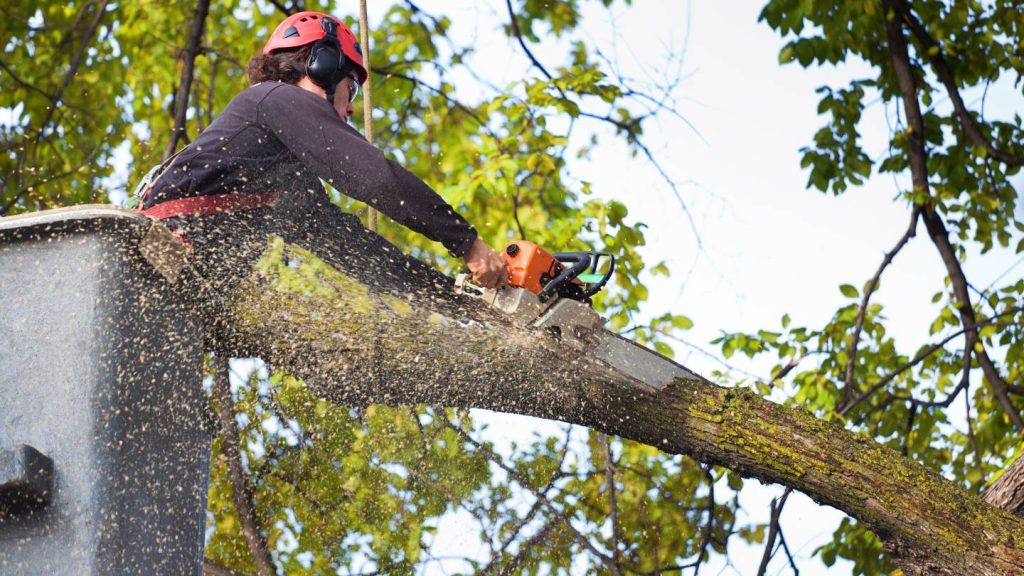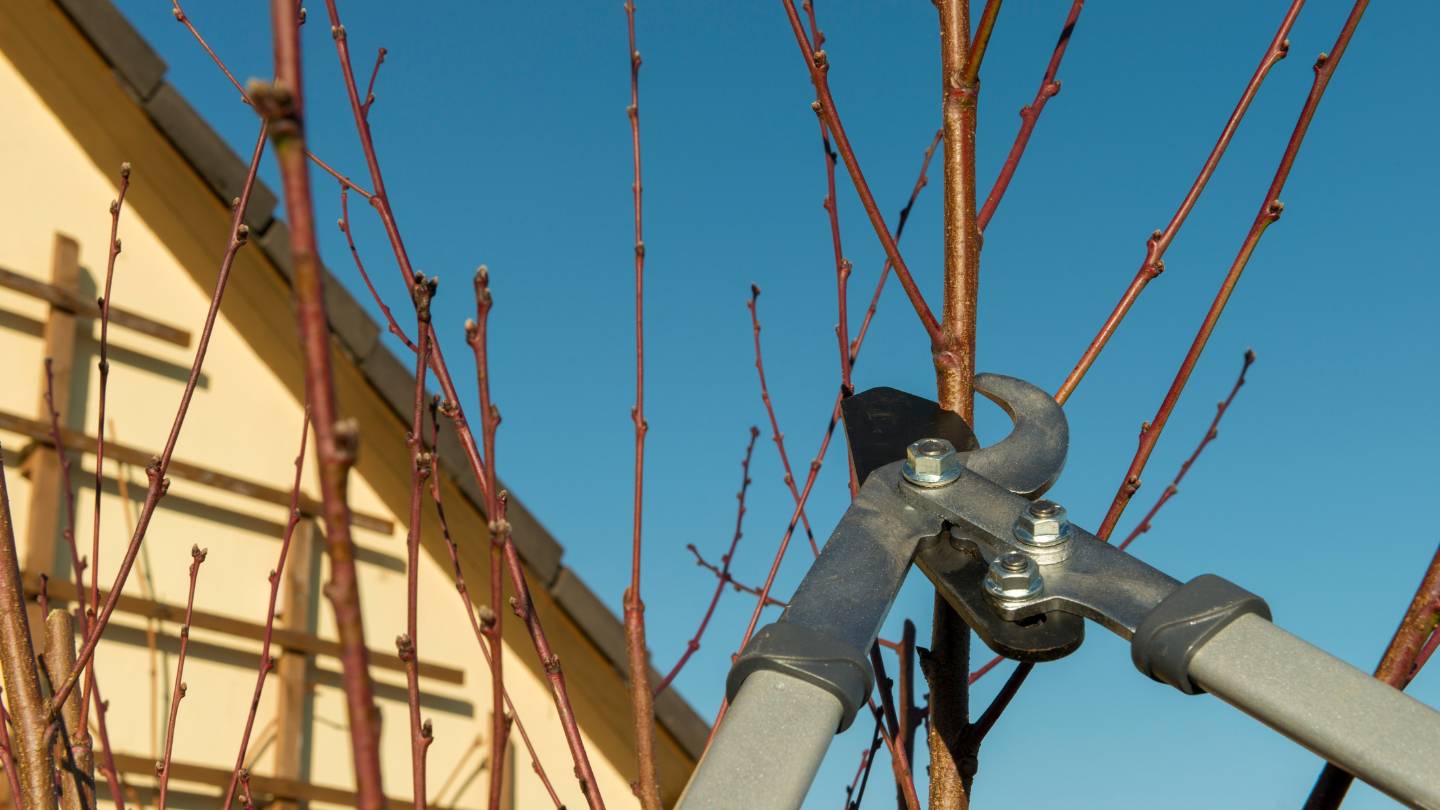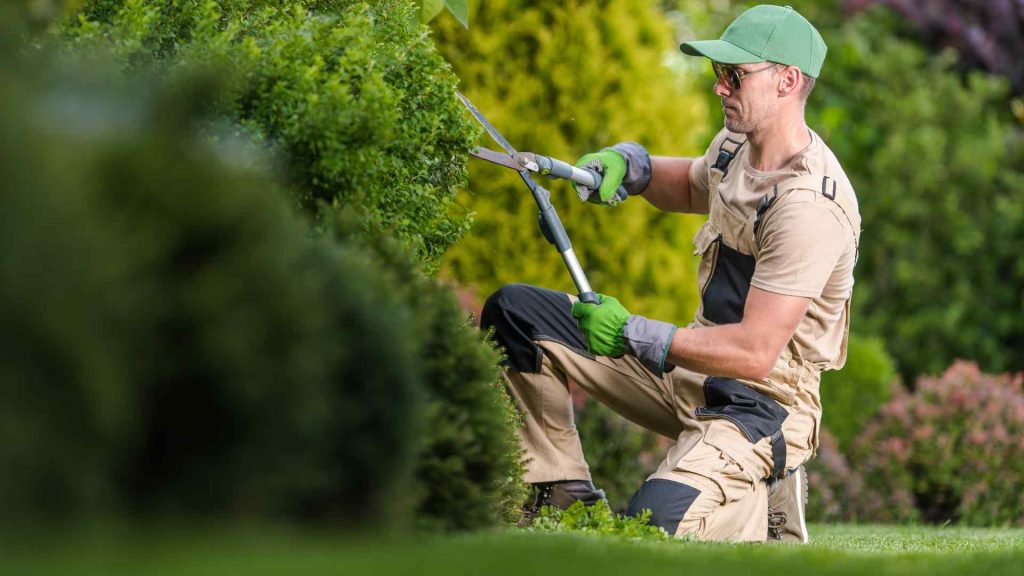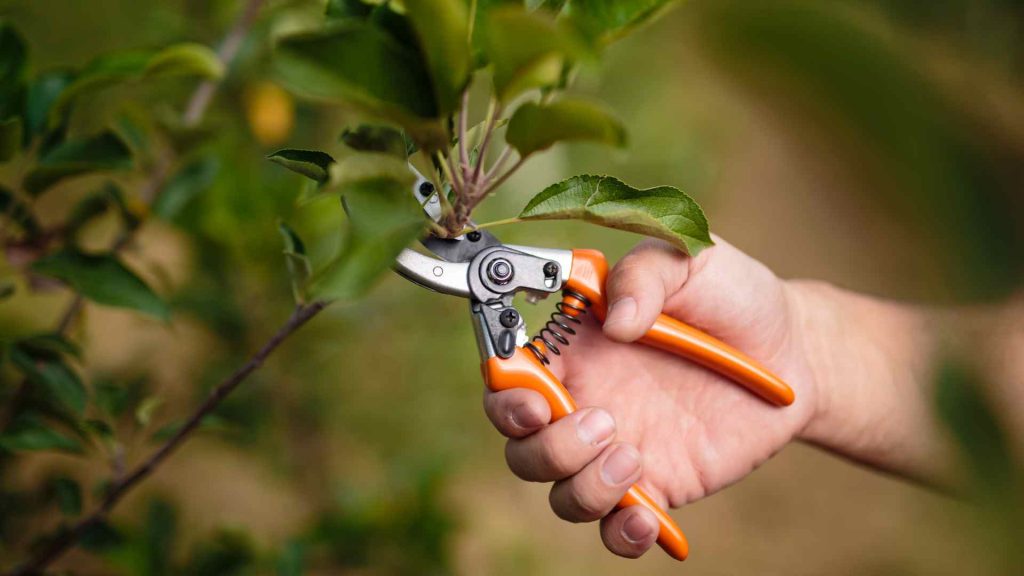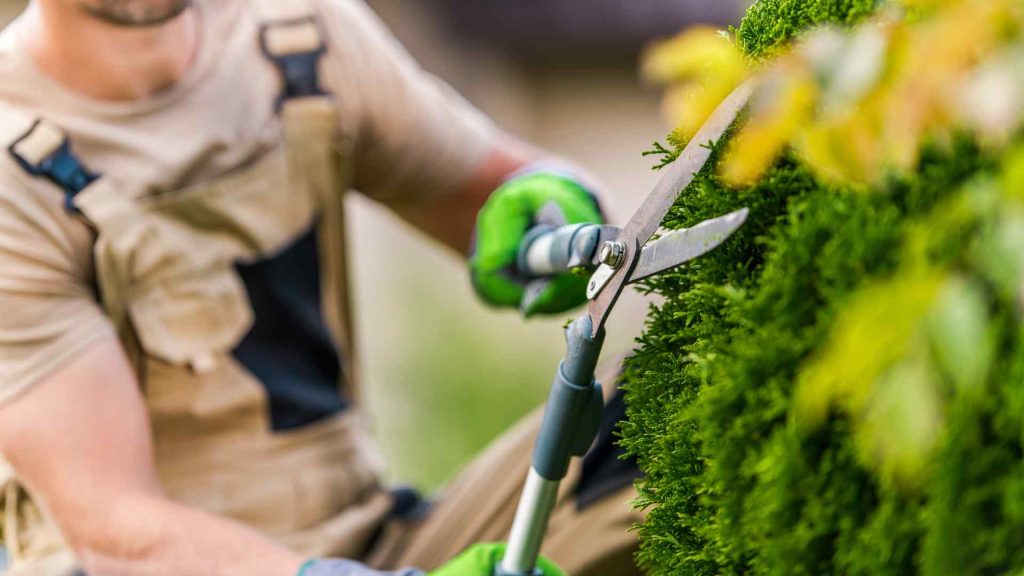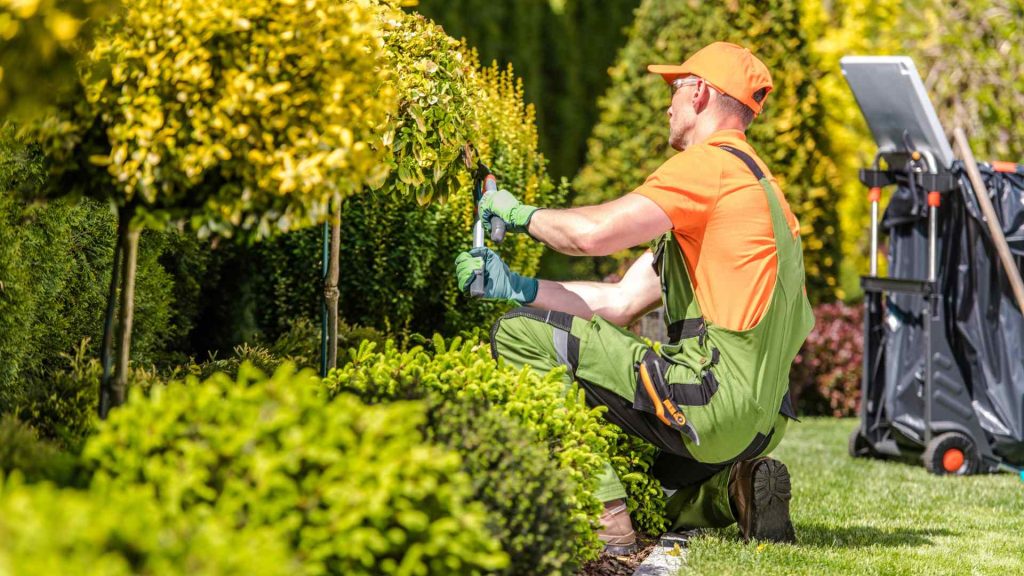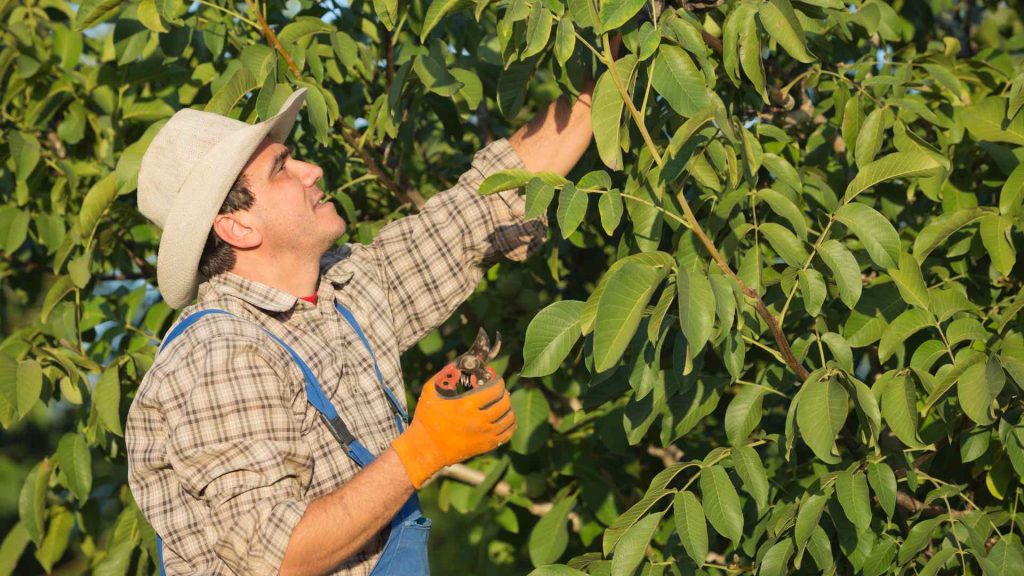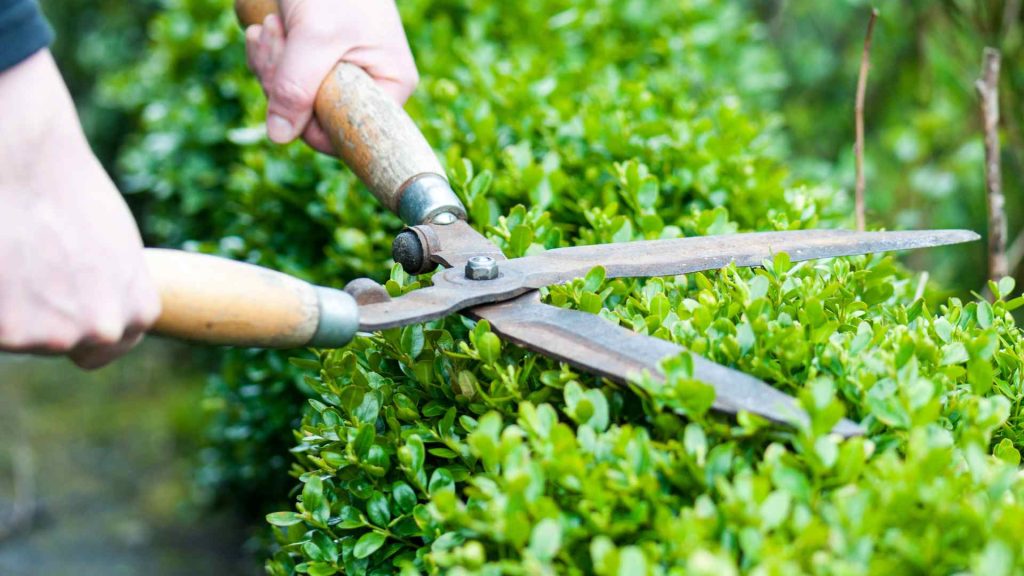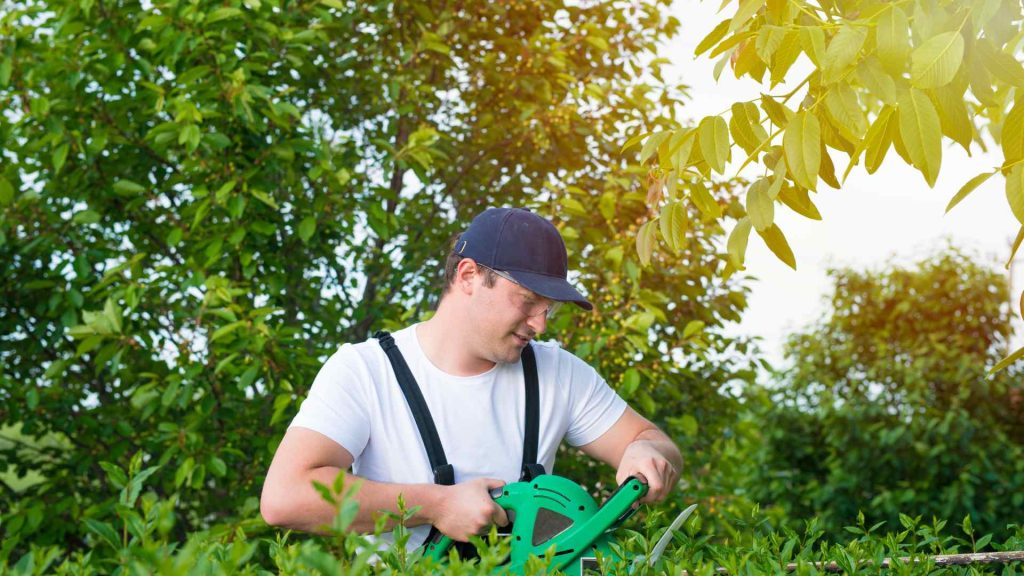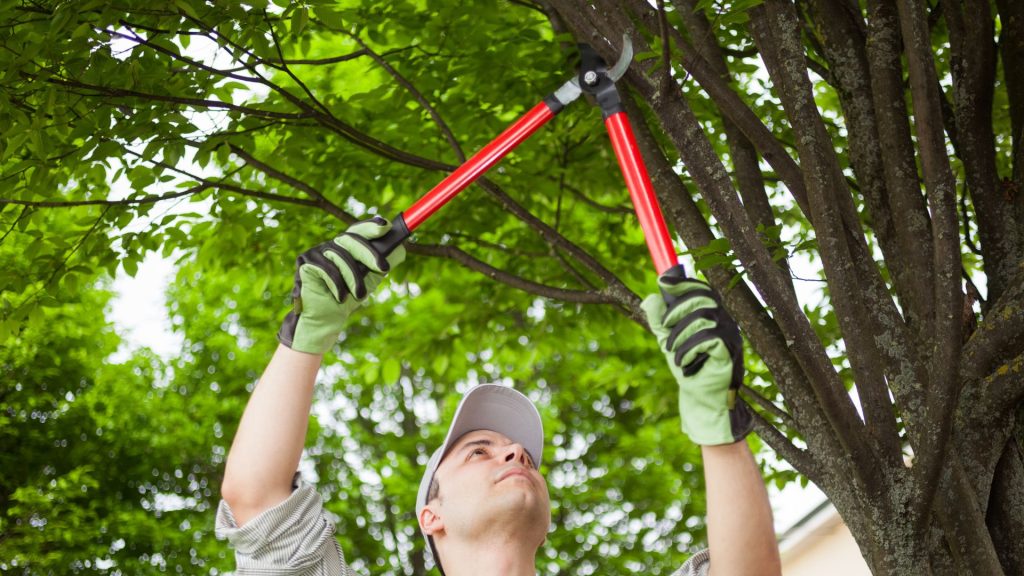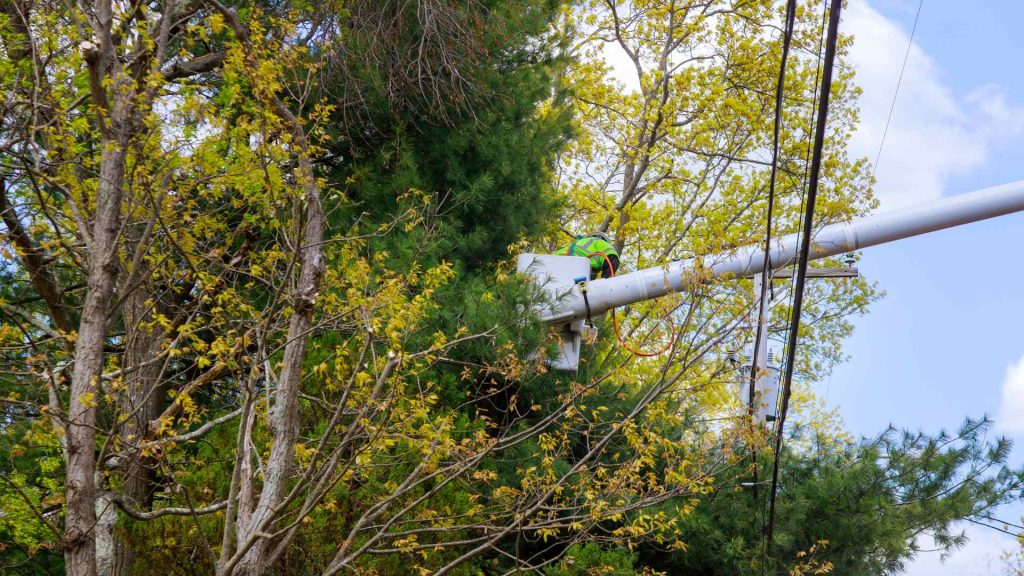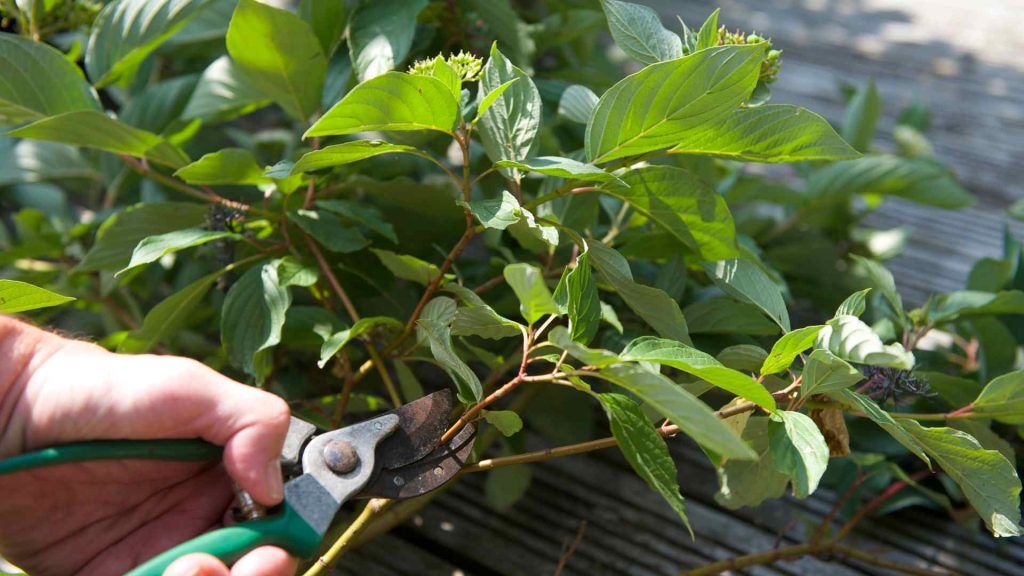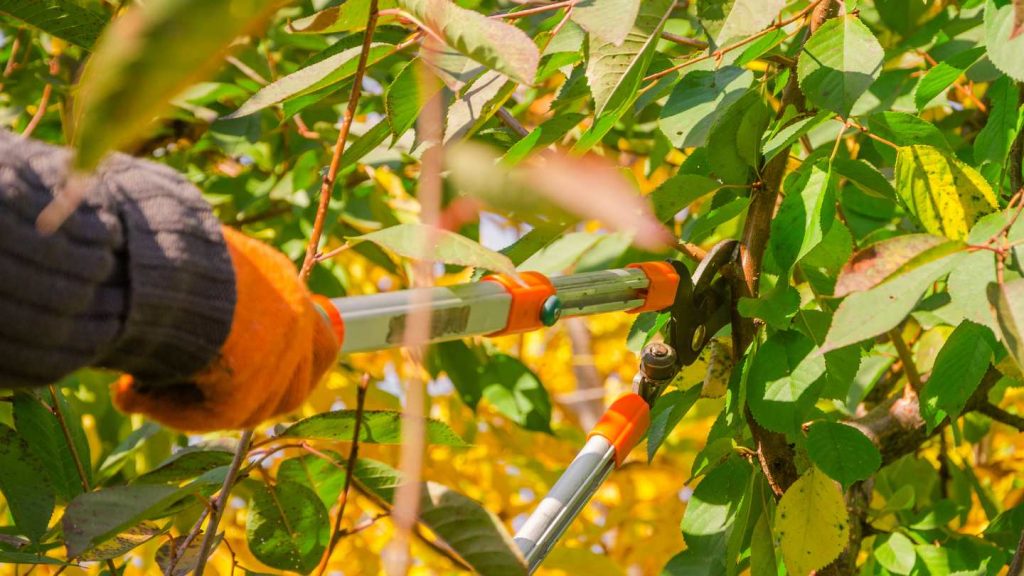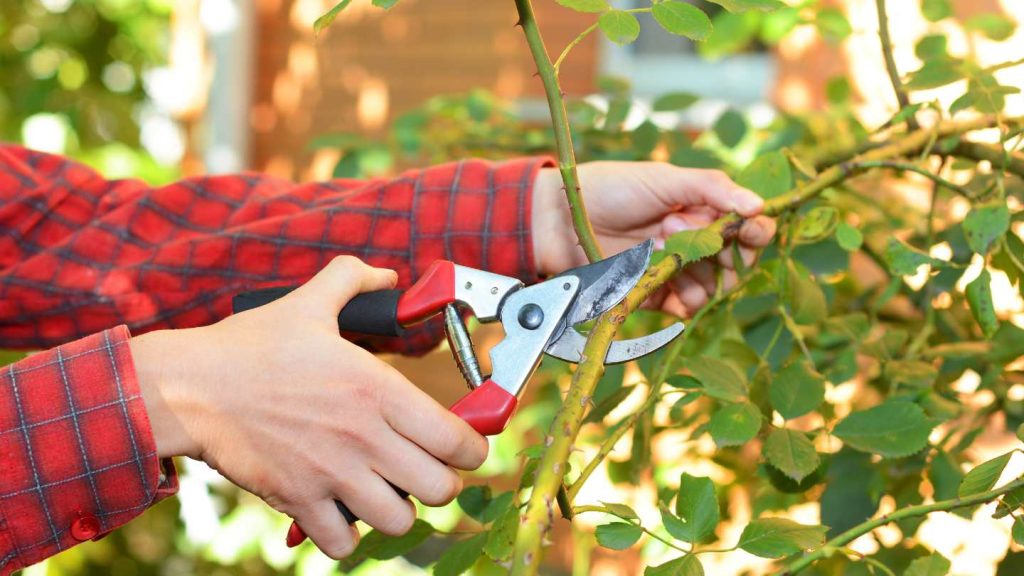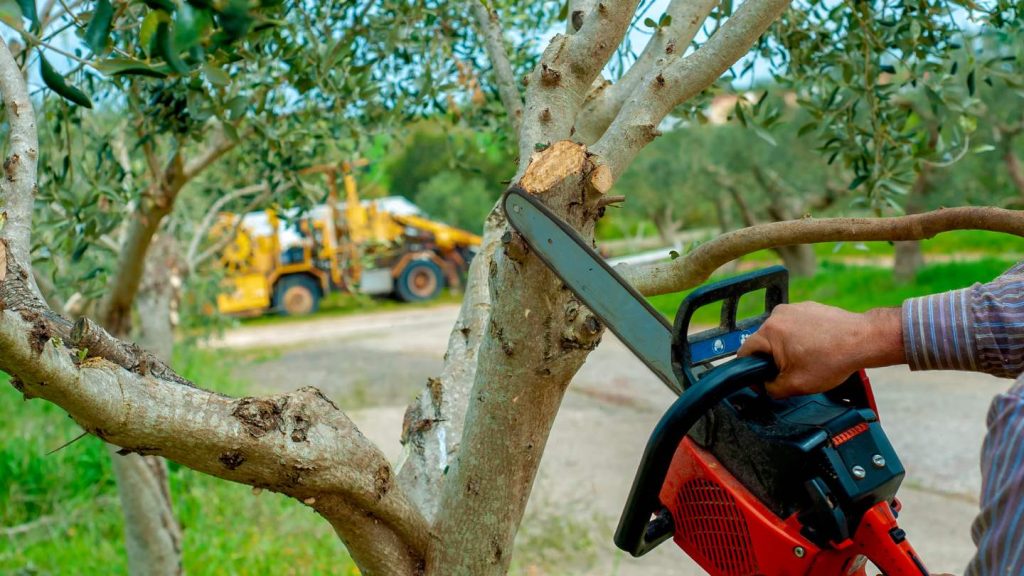Beyond simple maintenance, pruning trees, shrubs, and decorative plants is a crucial horticultural skill that greatly enhances the longevity, health, and beauty of your landscape.
This painstaking process entails snipping out particular plant sections to improve the structure, promote vigourous development, and induce flowering.
Any gardener or landscaper who wants to create a healthy and aesthetically pleasing environment must know how to trim trees, shrubs, and ornamental plants correctly.
Pruning is a multifaceted procedure that involves a range of approaches, each specifically designed to address the distinct growth patterns and traits of various plant species.
Understanding the unique requirements of different plants is essential to mastering the art of pruning, which ranges from shaping for aesthetic purposes to eliminating dead or broken branches.
This article walks readers through the many types of pruning techniques and offers advice on which techniques are best for which plants in order to get the best results.
Gardeners and landscape designers may mould their trees, shrubs, and ornamental plants into magnificent visual pieces that blend in flawlessly with their landscape design by knowing the subtleties of pruning different species.
Reasons/Benefits
For a tree or shrub to remain vigourous, pruning can be required. Pruning is specifically used to:
- Pruning the plant can help keep branches from getting in the way of electricity lines or even climbing over structures. To further reduce the risk of harm or damage to property, it can remove branches that are hanging over driveways or street corners, clearing the way for better visibility. Additionally, it can strengthen crotches so they don't snap in the event of a severe wind or ice storm. Topiaries, hedges, and espaliers can also be created by shearing and pruning plants, as indicated above.
- Maintain plant vitality: Trimming back overgrown branches or those that are too crowded can boost a plant's strength. Thinner plants often seem more balanced and symmetrical after this process. Cutting off unhealthy, diseased, or otherwise damaged branches helps the plant keep its shape, vitality, and health.
- Raise the standard of the plant's foliage, stems, blossoms, and fruit. If you prune off the spent fruit clusters and flowers from this year, you might just be able to coax the blossom buds into popping open next year. With the right kind of trimming, certain overgrown bushes can be returned to a more youthful and natural growth pattern.
- Limit growth: Pruning regularly helps plants stay within their landscape space and prevents the need for severe trimming in the future.
What Is The Best Time to Prune
There is no universally accepted pruning season, because different plants have varied needs. Contrary to popular belief, plants can survive improper pruning at the incorrect time of year; what they actually suffer is long-term harm or weakening.
Pruning shouldn't be done just because it fits the pruner, but rather when it will affect the plant the least. Following this rule will greatly reduce the likelihood of harming the plant. The optimal time to prune most plants is either in the late winter or early spring, right before the plant begins to grow.
The sections that deal with the different types of plants explain the exceptions to this rule. The springtime window immediately following the emergence of new growth is the least desirable.
A substantial amount of the carbs stored in the stems and roots is used up in the process of new growth. If new leaves aren't added before this "food" is eliminated, the plant's growth can be severely stunted. This is a common problem that arises during pruning.
Additionally, it is advisable to refrain from excessive trimming during the late summer because some plants may be stimulated to grow anew at this time. This "soft" growth could be susceptible to cold damage or winterkill if the cold weather arrives before it has fully crystallised.
Cut back storm-damaged, vandalised, or otherwise damaged plants as quickly as possible to keep pests and diseases at bay.
During the planting process, just minimal trimming is required since the young tree requires all of the energy that it can get from the capacity of the wood to store energy and the capacity of the leaves to produce energy simultaneously.
Instead of being "headed back" to "balance" the crown and roots, trees should be planted with their heads up. If a tree is out of "balance," it will autonomously prune itself by dropping branches and twigs. It will be feasible to prune these branches after they die.
But you should prune out any branches that are pressing against one another, dead, infected, or otherwise unhealthy before planting. When a tree is well-established, it needs to be pruned regularly to keep it in good shape.
You should check the hedges and trees for pruning needs annually. Unfortunately, plants often become out of hand because trimming is put off for years. In order to get the plant back to its original form and functionality, drastic trimming is necessary. Properly training trees when they are young plants reduces the amount of trimming that is needed as they mature.
Types Of Tree-Trimming Cuts
Thinning cuts and heading cuts are the two most common types of cuts used in pruning. Thinning and heading are commonly employed together to promote relatively vigourous growth in the desired directions.
Complete branches are severed from their origins at the trunk, the major branches, or the ground in thinning cuts. This allows more light and air to reach the plant without compromising its shape. When you head a branch, you trim off the tips and leave just the buds or offshoots at the base.
Usually two to four new branches grow from the buds or existing branches just below the heading cut, making for a denser tree structure overall. It's common for the surviving branches to become lanky and lengthy after thinning cuts are done.
In many cases, this legginess can be remedied by heading certain branches after thinning. It is helpful to have a dominant terminal leader, therefore cutting back some of the top branches that are challenging it is a good idea.
Why Should You Hire a Professional to Trim Your Trees
Adding trees to your yard is a great way to boost your home's visual appeal. You might think your trees are OK if you just leave them alone, but in reality, they need attention on a regular basis.
Overgrown trees aren't good for the health of your trees, thus it's important to prune them often. Dangers posed by long branches are not limited to the ground. Not to add that trees that are not maintained tend to be more sensitive to disease.
This is why it's highly recommended that you get the help of a professional tree trimming service. Some homeowners may incorrectly assume that tree pruning is a simple activity that they can complete on their own.
You Can Increase Kerb Appeal Through Pruning
If a tree isn't trimmed regularly, it might start to appear messy. Trees that have been pruned by a professional will seem healthier and more attractive, which will boost the value of your home. In order to get the desired outcome, you need to undergo highly particular training.
Tree Health Can Be Improved By Pruning
The health of your trees should be a priority even if you don't give a hoot about first impressions. Trees may be made stronger and grow faster with the right kind of trimming. Reason being, a tree's resistance and root growth may be boosted with proper pruning and trimming.
Avoid Possible Damage
Trimming your trees necessitates that you climb up high to reach the branches. This is obviously incredibly risky if you don't know what you're doing or have the right gear.
Professional tree services have highly trained and experienced staff who have all the essential equipment. They also have adequate insurance to cover any injuries that may occur.
Improper Tree Pruning May Affect Them
Incorrect tree trimming might cause more problems than it solves if you aren't an expert. A trained arborist has the expertise to trim a tree in a way that keeps it healthy.
Improper Pruning May Cause Property Damage
If you don't know what you're doing, you might end up damaging your property and hurting yourself while trimming a tree. Branches might fall on your house if you don't prune them properly.
As a result, certain branches may become weaker and more likely to fall during storms, causing further harm. A trained expert will take every safety measure possible to protect the properties around them from harm.
Efficient Use Of Time
Pruning trees may be time-consuming even if you have the necessary knowledge and experience, much alone the appropriate tools. To handle your tree trimming demands, a professional agency can despatch many workers, each with their own set of specialised equipment.
Conclusion
Pruning trees, shrubs, and ornamental plants is a crucial horticultural skill that enhances the longevity, health, and beauty of your landscape. It involves snipping out specific plant sections to improve structure, promote vigourous development, and induce flowering.
Gardeners and landscape designers must know how to trim these plants correctly to create a healthy and aesthetically pleasing environment.
Pruning is a multifaceted procedure that involves a range of approaches designed to address the distinct growth patterns and traits of various plant species. Understanding the unique requirements of different plants is essential to mastering the art of pruning, which ranges from shaping for aesthetic purposes to eliminating dead or broken branches.
This article walks readers through the many types of pruning techniques and offers advice on which techniques are best for each plant to get the best results.
Timing is essential for effective pruning, as every plant has a development cycle, and timely pruning is essential to maintain plant health, vigourous growth, and abundant flowering.
The optimal time to prune most plants is either in late winter or early spring, right before the plant begins to grow. However, there is no universally accepted pruning season, and it is important to prune when it will affect the plant the least.
During the planting process, minimal trimming is required, as young trees require all of the energy it can get from the capacity of the wood to store energy and the capacity of the leaves to produce energy simultaneously. Properly training trees when they are young reduces the amount of trimming needed as they mature.
Tree-trimming cuts include thinning and heading cuts, which promote growth in the desired directions. Thinning cuts involve severing branches from their origins, allowing more light and air to reach the plant without compromising its shape.
Heading cuts trim off the tips and leave only buds or offshoots at the base, resulting in a denser tree structure. It is important to hire a professional tree trimming service to maintain the health of your trees and prevent damage.
Regular pruning can increase kerb appeal and improve tree health, making them stronger and grow faster. Professional tree services have highly trained staff with the necessary equipment and insurance to cover any injuries.
Improper pruning can cause property damage and harm to the property. A trained arborist can ensure the safety of the surrounding properties and take necessary precautions to protect them.
Pruning trees can be time-consuming, but a professional agency can efficiently handle the demands, dispatching multiple workers with specialized equipment to handle the pruning demands. By hiring a professional, you can ensure the health and beauty of your tree.
Content Summary
- Pruning is a vital horticultural skill that enhances the longevity, health, and beauty of landscapes.
- The process involves snipping plant sections to improve structure, promote development, and induce flowering.
- Essential for creating a healthy and aesthetically pleasing environment for gardeners and landscapers.
- The book provides insights into methods, best practices, and factors for cultivating lush vegetation.
- Acts as a road map for mastering the art of pruning for vibrant and beautiful greens.
- Different pruning approaches cater to the distinct growth patterns and traits of various plant species.
- Understanding unique requirements is crucial for effective pruning and shaping for aesthetic purposes.
- The article guides readers on pruning techniques suitable for different plants for optimal results.
- Knowledge of subtleties in pruning allows the creation of visually appealing landscape designs.
- Timing is crucial for effective pruning, ensuring plant health, vigorous growth, and abundant flowering.
- Pruning during the late winter or early spring is generally optimal for most plants.
- Seasonal pruning advice helps maintain robustly healthy and captivatingly beautiful landscapes.
- Pruning is required to keep branches from interfering with electricity lines or structures.
- It prevents branches hanging over driveways, enhancing visibility and reducing the risk of harm.
- Strengthening crotches prevents snapping during severe wind or ice storms.
- Shearing and pruning create topiaries, hedges, and espaliers for ornamental purposes.
- Trimming overgrown branches boosts a plant's strength and creates a more balanced appearance.
- Removal of unhealthy or damaged branches maintains plant shape, vitality, and health.
- Pruning enhances the standard of foliage, stems, blossoms, and fruit for a healthier plant.
- Removal of spent fruit clusters and flowers can encourage blossom buds to open the following year.
- Regular pruning limits plant growth, preventing the need for severe future trimming.
- There is no universally accepted pruning season; timing varies based on plant needs.
- Pruning at the wrong time may result in long-term harm or weakening of plants.
- Optimal pruning time is late winter or early spring, just before new growth begins.
- Excessive late summer trimming may stimulate vulnerable "soft" growth susceptible to cold damage.
- Storm-damaged plants should be cut back promptly to prevent pest and disease issues.
- Minimal trimming is needed during the planting process to allow young trees to establish themselves.
- Well-established trees require regular pruning to maintain good shape and health.
- Annual checks for pruning needs prevent plants from becoming overgrown and requiring drastic trimming.
- Proper training of young trees reduces the amount of trimming needed as they mature.
- Thinning cuts and heading cuts are common pruning techniques for promoting vigorous growth.
- Thinning removes complete branches, allowing more light and air without compromising shape.
- Heading trims branch tips, promoting the growth of new branches and denser tree structures.
- Lanky branches after thinning can be addressed by heading certain branches to maintain balance.
- Dominant terminal leaders should be preserved through selective pruning.
- Trees added to yards improve visual appeal, but regular attention is essential for their health.
- Overgrown trees can pose dangers to property and are more susceptible to disease.
- Professional tree trimming services are recommended for proper tree care.
- Professional pruning enhances the appearance of trees, boosting the value of homes.
- Tree health can be improved with the right kind of pruning, strengthening resistance and root growth.
- Climbing to reach branches for trimming is risky; professional tree services have trained staff and essential equipment.
- Improper tree trimming by non-experts may cause more harm than good.
- Incorrect pruning may result in property damage and weakened branches prone to falling.
- Trained arborists ensure proper tree trimming to keep trees healthy and safe.
- Pruning trees is time-consuming; professional agencies dispatch skilled workers with specialized equipment.
- Hiring professionals for tree trimming ensures efficient use of time and optimal results.
- Professional tree services take safety measures to prevent harm to properties during tree trimming.
- Effective pruning is essential for boosting kerb appeal by maintaining neat and attractive trees.
- Proper training is required for achieving the desired outcome in tree pruning.
- Tree health and appearance can be significantly improved through regular and timely pruning.
Frequently Asked Questions
Pruning serves multiple purposes in plant care. It helps maintain plant health by removing dead or diseased branches, encourages new growth, improves the plant's shape, and enhances its aesthetic appearance. Pruning also promotes better air circulation and sunlight penetration, reducing the risk of diseases and ensuring the overall vitality of the plant.
The ideal time to prune plants varies depending on the specific species, but generally, late winter or early spring, before the onset of new growth, is a suitable time for many plants. However, some flowering shrubs and trees may require pruning after they bloom. Avoid pruning during extreme weather conditions, such as periods of intense heat or freezing temperatures, as it can stress the plants.
Look for branches that are dead, diseased, damaged, or crossing/rubbing against each other. Remove any branches that impede the plant's growth or affect its overall shape. Additionally, consider removing branches that grow inward toward the center of the plant, as they can restrict airflow and sunlight penetration.
The choice of tools depends on the size of the branches and the type of plant being pruned. For smaller branches, hand pruners or pruning shears are suitable. Larger branches may require loppers or pruning saws. Ensure that the cutting tools are sharp and clean to make precise cuts and minimize the risk of spreading diseases between plants.
Pruning done incorrectly or excessively can potentially harm plants. Improper cuts, such as leaving stubs or cutting too close to the trunk, can lead to infections or slow the plant's healing process. Over-pruning, especially removing more than one-third of the plant's foliage at once, can stress the plant and affect its growth. It's crucial to follow proper pruning techniques to avoid harming the plants.

